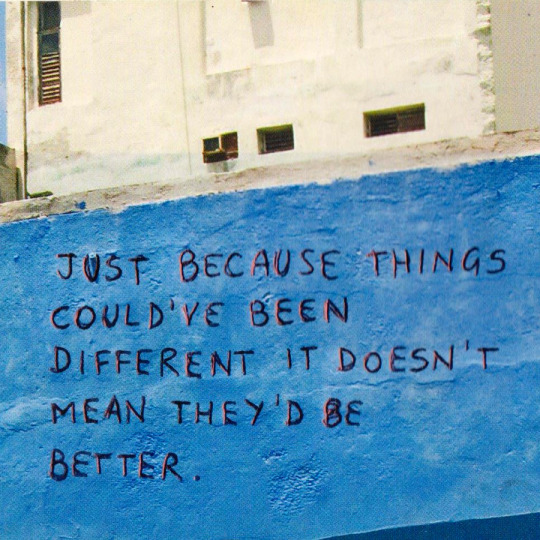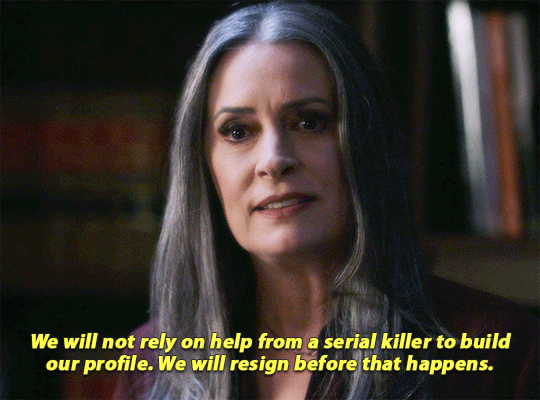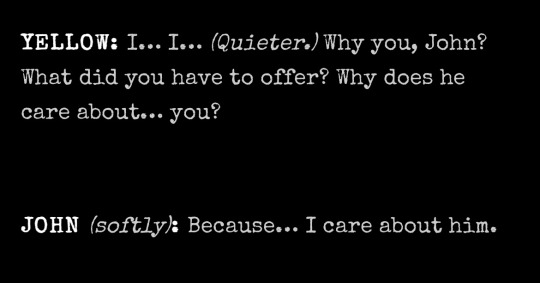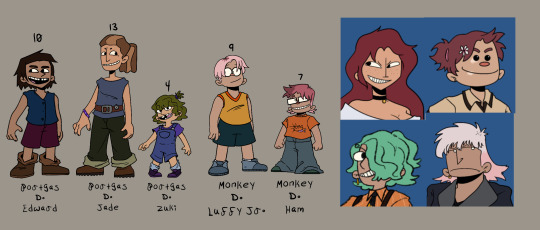#Evolution and Progress
Explore tagged Tumblr posts
Text
The Philosophy of Evolution
The philosophy of evolution explores the implications of evolutionary theory for understanding life, human nature, morality, and knowledge. It intersects with various philosophical disciplines, including metaphysics, epistemology, ethics, and the philosophy of science. By examining evolution through a philosophical lens, thinkers address questions about purpose, progress, morality, and the role of chance in shaping the natural world.
1. Metaphysics and Evolution
Naturalism: Evolution supports a naturalistic worldview where life and its complexity arise from natural processes without invoking supernatural explanations. It suggests that life evolves according to the laws of nature, without inherent design or purpose, challenging traditional metaphysical views of teleology (the belief that nature has intrinsic purposes or goals).
Reductionism vs. Holism: A key metaphysical question concerns whether evolution can be fully explained through reductionism (breaking down biological phenomena into smaller parts, like genes and molecules) or whether a more holistic approach, considering whole systems or species, is required to understand evolutionary processes.
Emergence: Evolution also brings up the idea of emergence, where new properties (such as consciousness) arise from complex systems that cannot be predicted by studying individual components. Evolution highlights how simple processes can lead to the development of more complex structures, such as life and intelligence.
2. Epistemology and Evolution
Evolutionary Epistemology: This branch of philosophy examines how evolutionary theory influences our understanding of knowledge itself. It suggests that human cognitive faculties evolved to help us survive rather than to discover absolute truth, which raises questions about the reliability and limits of human knowledge. Charles Darwin himself pondered whether human reason, evolved for survival, could fully grasp the ultimate truths of the universe.
Adaptive Knowledge: Some evolutionary epistemologists argue that knowledge is adaptive, meaning that our beliefs and perceptions are shaped by natural selection to be useful for survival, even if they are not necessarily "true" in an objective sense. This leads to debates about truth versus usefulness in our understanding of the world.
Problem of Skepticism: If our cognitive faculties evolved for survival rather than truth, this raises the problem of skepticism: How can we trust that our beliefs about the world, especially abstract scientific or philosophical beliefs, are reliable? This remains a significant philosophical issue related to evolution.
3. Ethics and Evolution
Evolutionary Ethics: Evolutionary theory has influenced the development of evolutionary ethics, which seeks to explain the origins of moral behavior in terms of evolutionary processes. According to this view, human morality and altruism may have evolved because they were beneficial for social cooperation and group survival.
Moral Relativism vs. Objectivism: Evolutionary ethics raises questions about whether morality is relative (based on adaptive needs that change over time) or objective (based on unchanging moral truths). Some philosophers argue that if morality is a product of evolution, it may lack objective grounding, while others suggest that evolution reveals fundamental moral principles that enhance survival.
Altruism and Self-Interest: Evolutionary biology also explores the tension between self-interest and altruism. Theories like kin selection and reciprocal altruism attempt to explain how seemingly selfless behaviors can evolve in organisms by benefiting related individuals or by fostering cooperation that indirectly benefits the actor.
4. Teleology and Progress
Non-Teleological Evolution: One of the key shifts brought about by Darwin’s theory of evolution was the rejection of teleology (the idea that nature has an intrinsic purpose or end goal). In contrast to earlier philosophical views, such as those of Aristotle, Darwinian evolution is non-teleological, meaning that life evolves through natural selection without any predetermined direction or final purpose.
Evolution and Progress: Philosophers debate whether evolution implies progress. While evolution leads to the development of more complex life forms, it is driven by random mutations and environmental pressures rather than an inherent drive toward improvement. Some argue that the notion of progress in evolution is a cultural projection rather than a scientific reality.
5. Human Nature and Evolution
Determinism and Free Will: Evolutionary theory raises questions about free will and determinism. If human behavior is shaped by genetic and environmental factors, to what extent do individuals have control over their actions? This leads to debates about the role of biology in determining human behavior and the possibility of moral responsibility.
Human Exceptionalism: Traditional views of human nature often emphasize the unique status of humans in the natural world. Evolution challenges this by placing humans within the continuum of animal life, suggesting that our traits, including language, intelligence, and culture, evolved from earlier species. This perspective calls into question notions of human exceptionalism and anthropocentrism (the belief that humans are the central or most important species).
Consciousness and Evolution: Philosophers also explore how evolution accounts for consciousness and subjective experience. The emergence of conscious awareness in humans and other animals presents a major challenge to evolutionary explanations, as it is not yet clear how conscious experience enhances survival in a way that can be selected for by natural processes.
6. Philosophy of Science and Evolution
Evolution as a Scientific Paradigm: The philosophy of science examines how evolutionary theory functions as a scientific paradigm. Since Charles Darwin's On the Origin of Species, evolution has become the dominant framework for understanding biology, but philosophers explore how this paradigm influences scientific methodology, the interpretation of data, and the nature of scientific explanation.
Falsifiability: Evolutionary theory has been scrutinized by philosophers like Karl Popper, who initially questioned its falsifiability (whether it can be empirically tested and potentially disproved). While Popper later revised his view, debates continue over how evolutionary theory fits within the framework of scientific inquiry.
Intelligent Design and Evolution: The debate between evolution and intelligent design continues in philosophical and public discourse. Proponents of intelligent design argue that certain features of the natural world exhibit complexity that cannot be explained by evolution alone and must involve a guiding intelligence. Philosophers examine whether this critique holds scientific validity or if it relies on unscientific assumptions.
7. Existential Implications of Evolution
Evolution and Meaning: For some philosophers, evolution challenges traditional notions of meaning and purpose in life. If humans are the product of random mutations and natural selection, rather than divine or purposeful creation, then what is the basis for human meaning? This existential question leads to varying responses, from nihilism (the belief that life lacks inherent meaning) to humanism (the belief that humans can create meaning through their actions and relationships).
Existential Anxiety: The idea that life evolved through a blind, purposeless process can evoke existential anxiety, as it challenges comforting beliefs about human significance and destiny. This leads to philosophical exploration of how individuals and societies can find meaning and value in a world shaped by evolutionary processes.
8. Social and Cultural Evolution
Cultural Evolution: Beyond biological evolution, philosophers explore how cultural practices, languages, and social norms evolve over time. Cultural evolution operates through different mechanisms than biological evolution, such as imitation, learning, and social transmission. Philosophers debate whether cultural evolution follows Darwinian principles or whether it requires a separate framework.
Social Darwinism: The misuse of evolutionary theory to justify social hierarchies and inequalities is known as Social Darwinism. This ideology applies the concept of "survival of the fittest" to human societies, often in a distorted way. Philosophers critically analyze the ethical and social implications of applying evolutionary ideas to human behavior and society, rejecting these misinterpretations in favor of a more nuanced understanding of evolution’s influence on culture.
The philosophy of evolution engages with profound questions about life, knowledge, morality, and human nature, arising from the theory of evolution. It examines the role of natural processes in shaping not only biological entities but also our understanding of knowledge, ethics, and meaning. By challenging traditional metaphysical and teleological views, evolution encourages a naturalistic and dynamic view of the world, while also raising new philosophical challenges, particularly regarding the nature of humanity, morality, and knowledge.
#philosophy#epistemology#knowledge#learning#education#chatgpt#ontology#metaphysics#Philosophy of Evolution#Naturalism#Evolutionary Epistemology#Evolutionary Ethics#Human Nature and Evolution#Teleology in Evolution#Evolution and Progress#Cultural Evolution#Existentialism and Evolution#Philosophy of Science
4 notes
·
View notes
Text
“Yeah, see, the Anti-Ecto Acts are even more troubling than ‘inciting war with the Realm of the Dead and all its gods’ level.” Phantom began. “It affects the living, even outside of that.”
Constantine huffed, but didn’t disagree. Bruce could only guess what he was thinking.
“At least, from what Clockwork taught me,” Phantom continued, and that made Constantine snap to attention, “ectoplasm is just kind of… There. Floating around in the background, but at such a low level that it doesn’t usually manifest. But it’s still there, and it functions kind of like radiation: just being around it might cause you to develop liminality.”
“Liminality?” Bruce asked. Phantom shrugged.
“Any side effects you would notice are only caused by high levels of exposure, nothing like this low-level radiation. But, well… Ectoplasm is both attracted to emotions and attracted by emotions. And ectoplasm heightens emotions, too. The fact that the human race has been alive so long, evolved to feel more complex emotions, it’s because the ectoplasm bonded enough with humanity to allow that. Humans achieved sentience because they could feel enough to determine they existed. Without ectoplasm, slowly those emotions will fade. And…” Phantom hesitated.
“…I can’t say that humanity will become nonsentient once again, not for sure. But I can say that you will slowly, generation by generation, lose the feelings you have now.”
#dc x dp#dp x dc#dpxdc#dcxdp#is this anything?#🤔#so yeah maybe the extremely low level of ambient ectoplasm that exists causes sentience over hundreds of thousands of years of evolution#and so the GIW’s goal is to (accidentally) erase all of humanity’s progress and turn them into unthinking unfeeling animals again#ironic? yes#satisfying? yes#ironically satisfying? YES YES YES#been in my drafts for like a month lol#along with another… maybe if I’m feeling productive I’ll finish that one later too
3K notes
·
View notes
Text

Master Your Emotions..
#whatif#meanttobe#fate#destiny#truth#reality#wisdom#openmind#change#reflection#hindsight#learning#insight#progress#maturation#evolution#hope#optimism#zen
16K notes
·
View notes
Text









wait for me
#iiiiii dont know what kind of emotion i was trying to convey with this. i wanted to do a character exploration with my pmd hero and partner#which got away from me a little. i hc the hero has complicated emotions around their past which they dont remember#and i get the sense it leans into growing up without a childhood bc you dedicate your entire life trying to save the world#so now that they finally have a second chance to grow up properly they wanna take their time yk?? and yeah ik evolution =/= maturity#i remember seeing a post about an elderly treecko from pokeani speculating you could grow really old without ever evolving#but in human terms of maturity. even though you cant remember anything about being human it conflicts with what you know#and its probably just a gimmick when partner just tells me what we're supposed to do next every time i talk to them bc it#progresses the story but i also like thinking they want to grow up so badly and do everything all at once#compared to hero who knows what its like to grow up before youre an adult and wants to slow down#im repeating myself a lot here but i swear its smth ive feltmany times over and never found a good answer to. or what i would tell someone#i didnt base neptunes flowers on anything specifically but i looked into flower symbolism and it seems buttercups represent childhood#marmalade's flower crown is meant to be periwinkles which symbolize sincere friendship and unbreakable bonds#i love themb ;__;#my art#myart#comics#doodles#pmd#pokemon mystery dungeon#pmd ocs#pmd2#neptune#marmalade#team satellite#pokemon#eye contact#scopo#sort of?
544 notes
·
View notes
Text

"they're the same person" "they're different people"
They are a result of mitosis 🦠
#artists on tumblr#digital art#illustration#fight club#fight club 1999#soapshipping#the narrator fight club#tyler durden#new soapshipping school of thought just dropped#honestly I'm neutral about what they are#they are just my blorbos#period#I think I'm artblocked also#my brain requires an art skill evolution and not seeing it on the spot makes it mad#me when progress takes time#serious drawing posponed due to#soapship mitosis#.#going to play games I think#hehehebehdhw 😼#martyryo
2K notes
·
View notes
Text

GF X PKMN SERIES 9/10: 👓
#gravity falls#pokemon#fiddleford mcgucket#porygon z#garbodor#magnezone#draws#HAPPY POKEMON DAY!#magnemite's his partner pkmn#he got porygon when he came to gravity falls and its evolutions matched his progress on the portal :)#and ofc he met trubbish in the dump when all that happened
459 notes
·
View notes
Text

🌕🦇🕷️🌙
redrew over this old mb as gomez n morticia art bc i didnt have time to do smth from scratch lol happy belated halloween!!

#the style evolution is crazy omg like i cant believe how much i’ve progressed just drawing these two over n over again LFKFLFKDL#matchablossom#sk8 the infinity#joecherry#matcha blossom#kaoru sakurayashiki#kojiro nanjo#kojiro#kaoru#myart#mine#sk8
448 notes
·
View notes
Text
I don't think I have shown this here, but I've been working on a drawing of one of my favourite creatures (?) from Dungeon Meshi, the Dryads. Also kind of making my own version of it by adding details specifically on their internal workings, and making them feel more like a fake puppet of a human grown from a flower.


The original dryad design vs Full Piece of mine (WIP)
I used several plants that have hinges and moving parts as a reference, mainly the hammer orchids (Drakaea sp.) for the internal joints and snapdragons (Antirrhinum sp.) for the external joints of the petal limbs. For the muscles used for more fast movement rather than structure, I used the curling tendrils that many climbing plants, especially in the cucurbit and grape families used for climbing, and can contract and extend pretty easily like springs. They don't use the same mechanism as normal tendrils though, as these move not by growing, but by hydraulics like other movable parts in plants like Mimosa, Drosera or the venus fly trap. For the general texture of the petal skin and sepal hair, I used mainly Hibiscus flowers for no particular reason other than I just love Hibiscus color diversity and petal texture.

Closeup of nearly finished Female flower
I Really enjoyed designing the face of the dryads, making them much more articulated and doll-like than the original designs. This facial petal had two moving parts: the mouth, which can open to allow pollination, which is partially inspired by orchids and snapdragons, with similar contraptions to access the pollen or stigmas; and the eyes, which are inspired by the retractable leaves of Mimosa plants, which can contract and relax via internal hydraulics to open the dryad's eyes.

Closeup of the facial petal of the female flower
I might add some text detailing some additional information once I finish the rest of the piece, but it depends on how good or cluttered it makes the piece feel, but I would like to add it. By the way for anyone wondering, the scientific name is a modification of the Greek name for dryads and other nymphs, which are usually named by adding -aie and similar suffixes to the plant they're associated with (greek dryads were named after oak trees). As these are more more flowers than trees, the genus name uses the prefix "Antho-" which is derived from the word for flower. The species name is much more simple as it means false (-oides) human (anthrop-).

Closeup of the male flower with additional information.
I hope you enjoyed this different kind of post where I go a bit in depth into my creative process, see you in the next one :>
#art#illustration#clip studio paint#speculative evolution#speculative biology#fanart#plants#botany#botanical illustration#dungeon meshi#delicious in dungeon#dryad#fantasy#creature design#art wip#work in progress
318 notes
·
View notes
Text






























Polin + Looking At Each Other (Seasons 1-3)
#just wanted to do an evolution of the looks#cause the progression is wild#polin#penelope x colin#colin x penelope#penelope featherington#colin bridgerton#bridgerton#love#nicola coughlan#luke newton#heart eyes for days#my heart#started from the bottom now we're here#the grow up so fast
902 notes
·
View notes
Text



emily prentiss + her waning tolerance of getting close to killers
#criminal minds#criminalmindsedit#criminal minds evolution#cmevolutionedit#cmverse#cmverseedit#emily prentiss#emilyprentissedit#mine#edit#*#category*#the progression here!!!!!! she's so young and playful as lauren she has NO IDEA how much that is going to change her!!!!#and then the memory of it all with karl it all comes back and she's struggling to shake it#and now??? FUCK THAT NOISE she is NOT doing this again#(never not thinking about 'it's clean. i know who the good guys and the bad guys are. i don't have to worry about screwing someone over.'#LIKEEEEEEEEEEEEE the implication of how much it messes her up to connect to monsters and see a sliver of humanity. that she thinks about#screwing over that human piece. that it stays with her. her relationship with empathy is so fascinating to me and i can't get enough!!!!!)#god i love her
794 notes
·
View notes
Text
now you call it madness

but i call it love

#malevolent#arthur lester#john malevolent#king in yellow#the evolution! the progression!#i have a lot of thoughts on this but all i have is this silly post#jarthur#idk all their ship names#but the association with madness and love… which i explained to a friend of mine#this is a distilled version of my rant more or less
689 notes
·
View notes
Text














"lovers spend years denying what’s ill fated. resentment rotting away galaxies we created, stars placed and glued meticulously by hand next to the ceiling fan. tried wishing on comets. tried dimming the shine. tried to orbit his planet. some stars never align. and in one conversation, i tore down the whole sky. spring sprung forth with dazzling freedom hues, then a crash from the skylight bursting through."
space-themed imagery from lover onto ttpd
#taylor swift#tswiftedit#lover#ttpd#the tortured poets department#i find this theme soooo interesting because it's relatively recent in her discography and you can see its evolution#and! it's one of the best examples of why it's not always foolproof to associate a theme with a muse#j*e songs have always had star and sky imagery#as well as fate#but so do m*tty songs!#and i'm convinced we are gonna see more golden themes in ts12 and i knooow some fans will be insufferable about it#either way. looking at this progression is just soooooo#parallels#mine*
147 notes
·
View notes
Text
In honor of Karkat day 🦀✨ here’s a video I first shared on IG showing the evolution of the Karkats I’ve been drawing (it doesn’t include all of them, there are way too many haha 🫣 Still it’s fun to see the changes I went through in the last three years. Maybe a few of you even remember some of the first ones? 😊)
#I honestly think I’ll never get bored of drawing him 🥺#I also have a Dave version on IG if you’re curious 😊#karkat vantas#karkat#homestuck#homestuck trolls#homestuck fanart#my art#art video#art evolution#art progress
303 notes
·
View notes
Text

I've been agonizing over deciding on plumage for these guys, and I'm still not sure if I'm 100% happy with these options. I know I don't want the bright primary colors of Macaws, or for them to be 1:1 representations of real birds (though the American Avocet colors on #4 were a fun exercise). They also shouldn't be overly detailed - I want them to be fun to draw, not a slog. I was also thinking about how extending the arm shows the usually-hidden inner wing and thought it might be fun to have a contrasty, flashy display in there (though the facial skin is the main display of fitness and emotion).
I think I might narrow it down to the last two as common pattern variants, and experiment with alternate color schemes or pigment mutations.
They are a temperate marshland species, so I stuck with mostly browns and greys to make them feel more commonplace and not overly tropical due to their other similarities with parrots. Incidentally some of the color and facial patterns I gravitated to remind me of Killdeer and Plovers, which live in marshy habitats.
As always feel free to reblog and leave your thoughts and comments!
#striders#birdfolk#worldbuilding#fantasy species#speculative biology#creature design#character design#world in progress#speculative evolution#avian species
67 notes
·
View notes
Text

Grandpas! >:)
All 7 of them are Shinjiro’s kids, heres Homura’s and Sora’s 3 kids + Laurel’s and Gib’s boys (Kobylu’s grandkids)

#gotta finish my little ref sheet that shows both their hair progression#zoro changes A LOT between his late 30s and early 50s because hes kinda balding#if he reached his 60s hed have a large bald spot byt then#but sanji goes through a very grief heavy hair evolution(?)#zoro gets gray hair definitely but sanji doesnt his black hair is pretty insistent so he just bleaches it back to blond#until hes around maybe his late 40s?#anyway old men#one piece#one piece fanart#roronoa zoro#vinsmoke sanji#black leg sanji#zosan#sanzo#one piece fankid#one piece oc
103 notes
·
View notes
Text

Art evolution
#digital art#artists on tumblr#2d#illustration#fantasy#art#artwork#portrait#drawing#character design#evolution#progress
37 notes
·
View notes